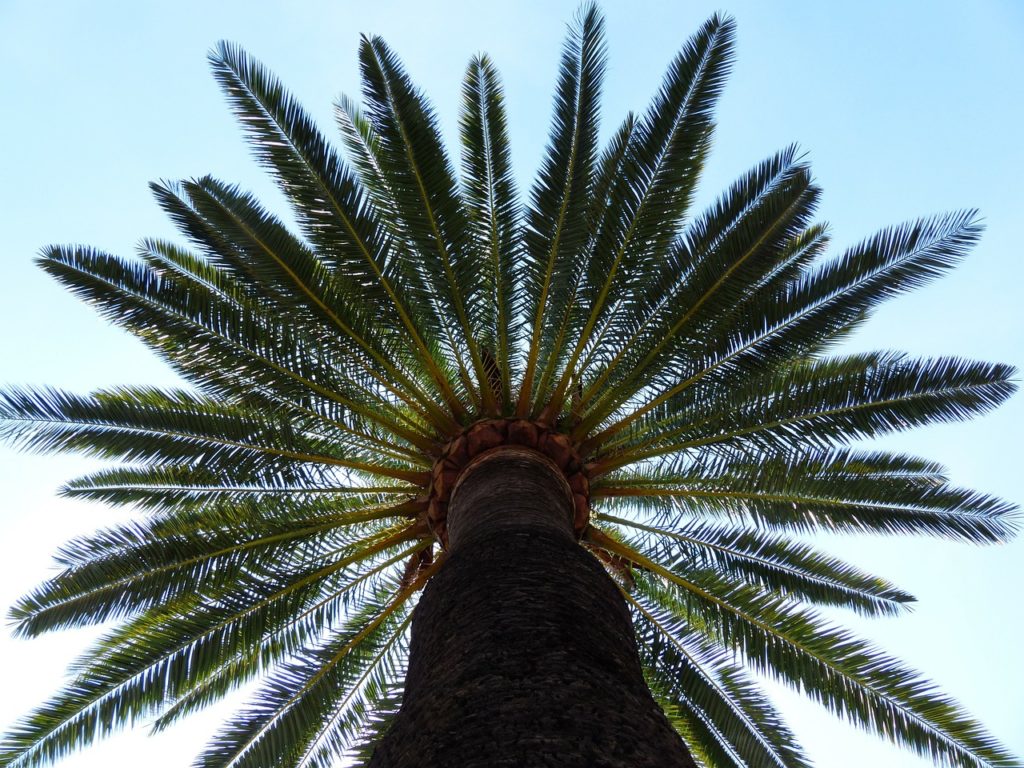As researchers look for more ways to reuse resources and reduce agricultural waste, the Middle East’s date palm tree is standing out from the rest.
With a climate ideal for the date palm, the Middle East and North Africa region is home to about two-thirds of the world’s 120 million date palm trees. These trees produce several million tons of dates annually, along with a wealth of secondary products such as leaves, palm midribs, and fronds. Most of the region’s trees are in Egypt, Saudi Arabia, Iran, Iraq, Tunisia, Morocco, Algeria, and the United Arab Emirates. Together, Egypt and Saudi Arabia produce more than one-fourth of the world’s dates.
Along with their fruit and other usable products, date palm trees create a lot of agricultural waste. Each year, one tree can make up to 44 pounds of dry leaves, along with seeds, pits, and stems. Date pits, which cannot be consumed, are about 10 percent of the mass of a date fruit. Saudi Arabia, the world’s largest date producer, generates upward of 200,000 tons of date palm waste annually.
Researchers are finding that date palm biomass can be reused, and because the trees grow quickly (a tree begins bearing fruit between four and eight years after it is planted), they are a promising renewable resource. While many date tree farms currently burn their waste or take it to landfills, which creates pollution, thanks to ongoing research and innovation, the agricultural industry in the Middle East is finding ways to use date palm waste.
Here are some reuse practices and innovations in the date palm industry.
Longtime methods
Not all date palm waste reuse strategies are new—Middle Eastern farmers and local residents have been recycling parts of the date palm and date fruit for many years. Farmers in countries such as Egypt and Iraq, for example, have used culled dates and date pits for food for animals. Other waste from date crops becomes raw materials for household goods, furniture, and building materials. Palm fronds, for example, have long been used in Northern Egypt, along with leaves and straw, to construct roofs on traditional houses. However, according to some reports, these traditional materials have been largely replaced by concrete and metal, and researchers estimate that about 90 percent of palm fronds in Egypt are burned each year.

Frond-based wood
Scientists have found that parts of palm fronds, which can grow several meters long, can be turned into wood. Called palm frond board or DPLM (short for “date palm leaf midrib”) board, this product can be used in everything from wooden tables to parquet flooring to frames for mirrors.
The process uses the midrib, the sturdy spine of the palm leaf, and hardens its soft material into wooden strips using eco-friendly techniques to dry them and then compress and glue the strips together into wooden blocks and boards. In some cases, this high-quality, local product can replace commercially imported wood.
Biofuels
Because date palms have a high concentration of volatile solids, are low in moisture, and are primarily composed of cellulose, hemicelluloses, and lignin, they are ideal for transforming into fuel through thermo-conversion techniques such as combustion and gasification that yield agents such as steam and bio-oil. The high content of volatile solids in date palm biomass also shows promise in producing biogas in anaerobic digestion plants in conjunction with sewer sludge, food waste, and animal waste. Date palm waste can also be fermented to create biofuel and create a compost material that could replace some chemical fertilizers.
Other fuel uses
Fuel pellets/briquettes: To create these alternative fuels, wood waste and agricultural biomass are treated and pelletized into a product that has similar uses to coal, even replacing it in power plants and other industrial uses.
Energy-rich products: When date-palm biomass is deprived of oxygen and decomposes, it creates biochar, bio-oil, and gases such as hydrogen, methane, and carbon dioxide. With further processing, bio-oil (especially desirable because it can easily be burned and is easier to transport and store than solid fuel) can be transformed into special engine fuel or into a syngas that can become biofuel.
Biofertilizer: Composting, a process where organic waste decomposes biologically, is a common way to get rid of agricultural byproducts. Date palms are a good candidate for this process, as they are about 80 percent organic content, and date palm composting can be scaled up to a commercial level. Date palm organic waste will decompose using traditional methods or through vermicomposting, a process that uses worms to speed up the composting process and produce a higher-quality composted product.
Future uses
The date palm continues to make the news as researchers discover new ways to reuse its waste. For example, a team from the University of Portsmouth studying the mechanical properties of waste from date palm fiber developed a bio-composite material that can serve as a substitute for composites that are strengthened by glass and carbon fibers. The material, which is sustainable, recyclable, and biodegradable, can potentially be used in everyday products such as car bumpers and door linings.

